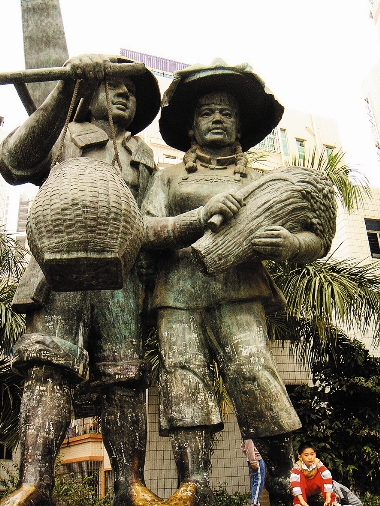|

James Baquet
THE first taste I had of Shenzhen’s origins was in Xiasha Village, near Shangsha.
Unfortunately, part of the village plaza is under reconstruction until next year. I especially miss Chenyanghao Temple, a small temple dedicated to two deified humans; it has been dismantled during the repairs.
But there’s still plenty to see. The Huang Siming Ancestral Hall is the site of the world’s largest folk banquet, an annual event where layers of food are prepared in tubs and dished out to participants. The event set a Guinness World Record in 2002, with 3,800 tables served.
Also still to be seen are the ancient tree and a monument to the village’s pioneers on the plaza’s west side; and the kitschy statues of Guanyin, the Laughing Buddha, and the Eight Immortals on the north side.
But the best part of the village is the small museum dedicated to a chronological telling of the exploits of the Huang family, from the life of patriarch Huang Qiaoshan, a Song-Dynasty native of Fujian with 21 sons (!) to the latest activities of the Huang-founded corporation. And best of all, there’s plenty of English interpretations to be found.
The entrance to the village is just across from the B&Q on Binhe Thoroughfare in Futian. The museum is on the north side of the street across from the plaza,
Notice: James Baquet will be leading free “Culture and History Walks” in Shenzhen on Saturday mornings in October and November. Write to him for more information: jamesbaquet@gmail.com
|

